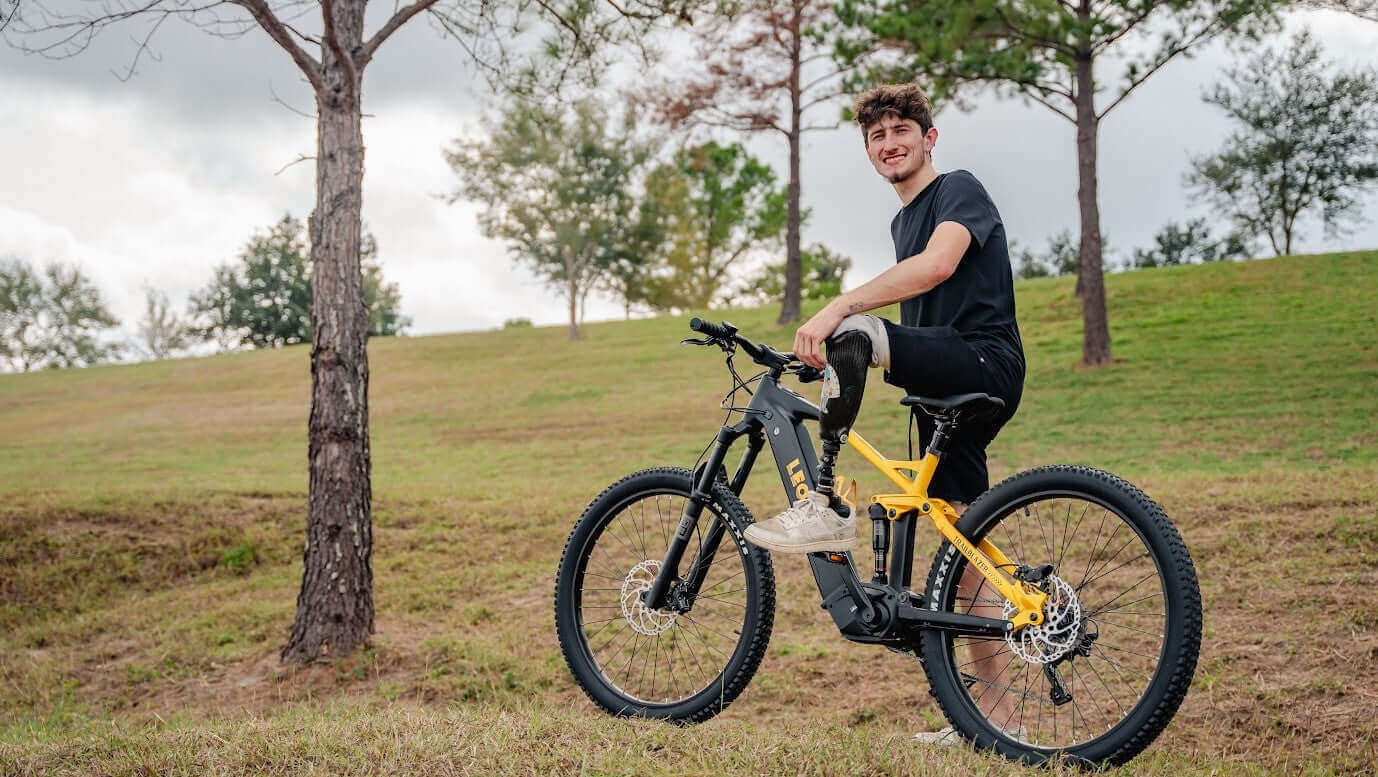
Electric Mountain Bikes in Los Angeles County: A Comprehensive Overview for Trail Riding and Off-Road Adventures
Executive Summary:
Electric mountain bikes (e-MTBs) are experiencing a surge in popularity, offering a new dimension to off-road cycling. This report provides a comprehensive overview for individuals in Los Angeles County who are interested in exploring the world of e-MTBs. It delves into the various categories of e-MTBs available, their essential components and underlying technologies, and the distinct advantages they offer for trail riding and off-road adventures. Furthermore, the report examines the specific regulations governing e-MTB usage within Los Angeles County, offers a glimpse into the current market landscape including popular brands and models, discusses pricing considerations, outlines essential maintenance practices, and explores local resources for rentals and guided tours. Ultimately, this analysis underscores the potential of e-MTBs to significantly enhance outdoor experiences and promote active lifestyles within the diverse terrain of the Los Angeles region.
1. Understanding Electric Mountain Bikes:
1.1 Defining the Electric Mountain Bike:
The electric mountain bike, or e-MTB, distinguishes itself from a traditional mountain bike through the integration of an electric motor and a battery system.1 This addition provides riders with pedal assistance, augmenting their own power output to varying degrees depending on the e-MTB's classification.2, 3 It is crucial to recognize that, for the majority of e-MTB categories, the rider's pedaling effort remains a fundamental requirement, particularly in Class 1 and Class 3 models.1, 2 These classifications, as outlined in 3, govern the level of motor assistance, maximum speeds, and the presence of a throttle. This pedal-assist nature differentiates e-MTBs from fully motorized vehicles, a distinction that carries significant weight when considering trail access and the regulatory landscape.
1.2 Exploring Different Categories:
1.2.1 Full-Suspension E-MTBs (E-Fully):
A defining characteristic of full-suspension e-mountain bikes, often referred to as E-Fully bikes, is the presence of shock absorbers on both the front and rear wheels.2, 4 This dual suspension system allows the bike to effectively absorb shocks and impacts from both ends, leading to enhanced comfort and control, especially when navigating rocky or uneven trails.2, 4 The added suspension also contributes to a reduction in rider fatigue over longer distances, enabling riders to tackle more challenging terrain with greater ease.4 Several prominent brands are recognized for their high-quality full-suspension e-MTB offerings, including Trek, Specialized, Haibike, Giant, and Cannondale.4, 5, 6 These bikes are particularly well-suited for the mountainous regions surrounding Los Angeles County, such as the Santa Monica Mountains and the Angeles National Forest, where trails often feature significant elevation changes and technical obstacles. The focus on comfort and control in E-Fully bikes indicates a design philosophy aimed at riders who prioritize performance and are looking to conquer more demanding off-road environments.
1.2.2 Hardtail E-MTBs (E-Hardtail):
In contrast to full-suspension models, hardtail e-mountain bikes (E-Hardtails) are characterized by a suspension fork on the front of the bike only, with no rear shock absorption system.2, 7 This simpler design results in several advantages, including a lighter overall weight, a more affordable price point, and reduced maintenance requirements.2, 7 Furthermore, the rigid rear end of a hardtail e-MTB contributes to more efficient power transfer, making them particularly adept at climbing.7 Numerous brands offer a variety of hardtail e-MTBs, catering to different budgets and riding styles. These include Specialized, Trek, Giant, Cannondale, and Bulls.2, 7, 8, 9, 10 For individuals in Los Angeles County who are new to e-mountain biking or who primarily ride on smoother trails with fewer technical challenges, a hardtail e-MTB can be an excellent entry point. Their affordability and ease of maintenance make them a practical choice for casual riders and commuters alike.
1.2.3 Fat Tire E-MTBs:
Fat tire e-mountain bikes are easily identifiable by their significantly wider tires compared to traditional mountain bikes.2, 11, 12, 13, 14, 15, 16, 17 These extra-wide tires provide a larger contact patch with the ground, resulting in superior traction and enhanced stability across a diverse range of challenging terrains, including sand, snow, and loose trails.12, 14, 16 Several brands specialize in or offer fat tire e-MTB models, such as Aventon, Himiway, QuietKat, Borealis, and Totem.11, 12, 13, 14, 16, 18 Given Los Angeles County's unique geographical location with its proximity to beaches and potential for trails with loose surfaces, fat tire e-MTBs present a compelling option for riders seeking versatility and the ability to explore beyond conventional mountain biking trails. These bikes can open up opportunities for riding along the coastline (where permitted) or on softer, less stable terrain where narrower tires might struggle to maintain grip.
1.2.4 Classification by Motor Power (Class 1, 2, 3):
Electric mountain bikes are further categorized into three distinct classes based on their motor power, speed limitations, and the presence of a throttle.1, 2, 3, 19, 20, 21, 22, 23 Understanding these classifications is vital for navigating local regulations and ensuring compliance.
- Class 1 e-bikes are defined as pedal-assist only, meaning the motor provides assistance only when the rider is actively pedaling, and this assistance ceases once the bicycle reaches a speed of 20 miles per hour.1, 2, 3, 19, 20, 21, 22, 23 The motor in a Class 1 e-bike has a maximum power output of 750 watts.
- Class 2 e-bikes also have a maximum speed of 20 miles per hour and a maximum motor power of 750 watts.1, 2, 3, 19, 20, 21, 22, 23 However, in addition to pedal assist, Class 2 e-bikes are equipped with a throttle, allowing the motor to propel the bicycle even without the rider pedaling.
- Class 3 e-bikes are pedal-assist only, similar to Class 1, but with a higher maximum assisted speed of 28 miles per hour.1, 2, 3, 19, 20, 21, 22, 23 These e-bikes also have a maximum motor power of 750 watts and are required to have a speedometer. In California, riders of Class 3 e-bikes must be at least 16 years old and are required to wear a helmet.
The distinction between these classes is crucial as local regulations in Los Angeles County often specify which classes of e-bikes are permitted on certain trails and in specific areas.
| Feature | Class 1 | Class 2 | Class 3 |
|---|---|---|---|
| Pedal Assist | Yes | Yes | Yes |
| Throttle | No | Yes | No |
| Top Speed | 20 mph | 20 mph | 28 mph |
| Helmet Requirement | Under 18 | Under 18 | All riders |
| Age Restriction | None | None | 16 years or older |
2. Key Components and Technologies:
2.1 Motor Types:
2.1.1 Mid-Drive Motors (Crank Drive):
Mid-drive motors, also known as crank drive motors, are strategically positioned in the center of the e-MTB frame, typically in the bottom bracket area near the pedals.24, 25, 26, 27, 28, 29 This central and low placement of the motor contributes to a balanced weight distribution, resulting in better handling and improved riding characteristics.24, 29 Mid-drive motors are known for delivering power smoothly and efficiently, often providing a more natural riding feel.24, 29 They also have the potential for longer range compared to hub motors, as they can leverage the bike's gears to optimize power output for different terrains and speeds.24, 25, 29 However, e-MTBs equipped with mid-drive motors generally come with a higher price tag, and the system can potentially lead to increased wear on the bike's drivetrain components due to the combined power of the rider and the motor.24, 28, 29 Prominent brands in the mid-drive motor market include Bosch, Shimano, Specialized, and Yamaha, all of which are commonly found in high-performance e-MTBs.25 For riders in Los Angeles County who prioritize performance, efficiency, and a natural riding experience on the diverse local trails, mid-drive motors are often the preferred choice.
2.1.2 Hub Motors (Front and Rear):
Hub motors, in contrast to mid-drive systems, are located directly within the hub of either the front or rear wheel of the e-MTB.24, 25, 26, 27, 28, 29, 30, 31, 32 This design is generally simpler and more affordable compared to mid-drive motors, often resulting in lower overall bike costs.24, 30, 32 Hub motors also tend to require less maintenance due to their enclosed design with fewer moving parts.24, 30, 32 However, the placement of the motor in the wheel hub can affect the bike's handling, particularly due to the added weight at the periphery.33 A key trend is the development of motors that are lighter and more compact without sacrificing power output, leading to improved handling and a more integrated aesthetic.33 Simultaneously, manufacturers are focusing on making motors quieter, enhancing the overall riding experience by reducing noise distractions.33 Notable new and updated motor systems include the Bosch Performance Line SX, which aims to bridge the gap between light and full-power e-MTBs 34, 35, 36, 37, the powerful DJI Avinox motor 35, 36, 37, 38, the refined Shimano EP801 34, 35, 36, 37, 39, 40, 41, and Specialized's latest SL 1.2 (Generation 2) and 2.2 (Generation 3) motors.35, 36, 41, 42 These advancements often include increased torque for better acceleration and climbing ability, improved efficiency for extended range, and enhanced integration with smartphone apps and other smart features, allowing riders to customize their riding experience and track performance data.33, 35, 43 For potential e-MTB buyers in Los Angeles County, staying informed about these latest motor innovations can help them choose a bike that offers the most advanced technology and best suits their specific riding needs and preferences.
2.2 Battery Capacity and Range:
The capacity of an e-MTB battery, which determines how far a rider can travel on a single charge, is typically measured in Watt-hours (Wh) and sometimes in Amp-hours (Ah).2, 44, 45, 46 Common battery sizes found in e-MTBs range from around 320Wh to 900Wh, with larger capacities generally translating to longer potential ranges.2, 39, 42, 44 However, the actual range achieved on a given battery charge is influenced by several factors, including the rider's weight, the type of terrain being ridden, the level of pedal assistance being used, wind resistance, and even tire pressure.18, 47, 48, 49 For riders planning longer excursions on the trails around Los Angeles County, opting for an e-MTB with a higher battery capacity is generally advisable. Additionally, some e-MTB models, particularly lightweight ones, offer the option of using range extenders – auxiliary batteries that can be mounted to the frame to provide additional power and extend the overall riding distance.39, 42, 44, 50, 51 The latest advancements in battery technology are focused on increasing energy density, allowing for larger capacities without a significant increase in weight or size, as well as improving overall efficiency and extending the battery's lifespan.33, 43 This means that newer e-MTBs available in Los Angeles County are likely to offer improved range and a more efficient power delivery system compared to older models.
2.3 Suspension Systems:
2.3.1 Front Suspension Forks:
Front suspension forks are a crucial component of any mountain bike, including e-MTBs, as they play a vital role in absorbing shocks and impacts on the front wheel, providing the rider with greater comfort and control.52, 53, 54, 55 There are two primary types of front suspension forks commonly found on e-MTBs: air forks and coil forks.52, 54, 55 Air forks utilize compressed air as the suspension medium, making them generally lighter and offering a high degree of adjustability, allowing riders to fine-tune the fork's responsiveness to suit their weight and riding style.52, 54, 55 Coil forks, on the other hand, use metal coil springs and are known for their more linear and consistent suspension feel throughout the entire range of travel, making them well-suited for more aggressive riding and rougher terrain.52, 54, 55 Suspension travel, measured in millimeters (mm), refers to the amount of distance the fork can compress to absorb an impact. E-MTBs designed for cross-country riding typically have shorter travel (80-120mm), while trail and all-mountain bikes often feature forks with 120-160mm of travel, and downhill-oriented e-MTBs can have travel ranging from 180-200mm.4, 53, 55, 56 For riders in Los Angeles County, the choice of front suspension fork and the amount of travel should be based on the types of trails they intend to ride, with more challenging and technical trails generally benefiting from longer travel and robust construction.
2.3.2 Rear Suspension Systems (for Full-Suspension E-MTBs):
For full-suspension e-MTBs, the rear suspension system works in conjunction with the front fork to absorb shocks and maintain traction on the rear wheel.4, 53, 54, 56 Similar to front forks, rear suspension systems primarily utilize either air shocks or coil shocks.52, 54 Air shocks offer the advantages of being lightweight and highly adjustable, allowing riders to precisely control the rear suspension's feel and performance based on their preferences and the terrain.52, 54 Coil shocks provide a more consistent and predictable feel throughout their travel, often favored by riders who prioritize durability and performance on demanding trails.52, 54 Rear suspension travel, like front suspension travel, is a critical factor in determining an E-Fully's capability on different types of trails. Bikes with less rear travel (around 120-140mm) are often better suited for less aggressive trails, while those with more travel (150-170mm or more) are designed to handle rougher, more technical descents and larger impacts.4, 53, 55, 56 For riders in Los Angeles County looking to tackle the steeper and more challenging trails in areas like the San Gabriel Mountains, a full-suspension e-MTB with adequate rear suspension travel is essential for a comfortable, controlled, and enjoyable ride.
2.3.3 Suspension Brands:
Several reputable brands are known for producing high-quality suspension components for mountain bikes, including e-MTBs. Some of the most prominent names in the industry include Fox, RockShox, Marzocchi, and Öhlins.42, 55 These brands invest heavily in research and development to create suspension systems that offer optimal performance, durability, and adjustability. Bikes equipped with suspension components from these manufacturers often indicate a higher level of quality and performance, suggesting that riders in Los Angeles County looking for reliable and capable e-MTBs should pay attention to the suspension brand when making their purchasing decisions.
3. The Appeal of Electric Mountain Biking for Off-Road Adventures:
3.1 Benefits for Trail Riding:
Electric mountain bikes offer a multitude of benefits that enhance the trail riding experience for cyclists in Los Angeles County.57, 58, 59, 60 One of the most significant advantages is the enhanced speed and range provided by the electric motor, allowing riders to cover more trails and explore longer distances with less physical exertion.57, 58, 59, 60 This is particularly beneficial in the hilly terrain surrounding Los Angeles, where challenging uphill sections can often deter riders on traditional bikes. The electric assist on e-MTBs makes climbing significantly easier and more enjoyable, transforming previously arduous ascents into manageable and even fun parts of the ride.2, 57, 58, 59, 61, 62 By reducing the overall physical strain, e-MTBs allow riders to experience less fatigue, enabling them to ride for longer durations and more frequently without feeling overly exhausted.57, 61, 63, 64 Furthermore, e-MTBs have significantly increased the accessibility of mountain biking, opening up the sport to a wider range of individuals, including beginners, older adults, and those with physical limitations who might find traditional mountain biking too demanding.19, 58, 61, 63, 65 This inclusive nature allows more people in the Los Angeles area to enjoy the health benefits and recreational opportunities offered by the region's extensive network of trails.
3.2 Advantages for Off-Road Exploration:
Beyond the benefits for general trail riding, electric mountain bikes offer distinct advantages for those in Los Angeles County seeking more adventurous off-road exploration.60, 61, 66, 67, 68, 69 The extended range provided by the electric assist allows riders to venture further into wilderness areas and access remote locations and scenic landscapes that might be difficult or impossible to reach on a traditional mountain bike.60, 61, 66, 67, 68, 69 By reducing the physical demands of riding, e-MTBs enable riders to focus more on their surroundings, fully immersing themselves in the natural environment and appreciating the beauty of the diverse landscapes around Los Angeles.61, 66, 69 The availability of different types of e-MTBs, such as fat tire and full-suspension models, further enhances their versatility across various off-road conditions prevalent in the region, from the sandy beaches along the coast to the rugged mountain trails inland.2, 12, 17, 49, 62, 67, 68 This adaptability makes e-MTBs an ideal tool for exploring the full spectrum of off-road adventures that Los Angeles County has to offer, empowering riders to discover new places and experience the outdoors in exciting and accessible ways.
4. Navigating Regulations in Los Angeles County, California:
4.1 Overview of California E-Bike Laws:
The operation of electric mountain bikes in Los Angeles County is governed by the e-bike laws established by the state of California.20, 21, 22, 23, 70 As previously detailed, California law defines three classes of electric bicycles based on their motor power, speed capabilities, and the presence of a throttle. Generally, e-bikes in California are treated similarly to traditional bicycles, granting them access to most bike lanes and paths.21, 22, 23 However, there are specific regulations that e-MTB riders in Los Angeles County need to be aware of. For instance, riders of Class 3 e-bikes, which can reach speeds of up to 28 mph with pedal assist, are required to wear a helmet, and there is an age restriction of 16 years or older for operating them.3, 20, 21, 22, 23 Importantly, unlike mopeds or motorcycles, e-bike operators in California are not typically required to have a driver's license, register their bikes, or carry insurance.20, 21, 22, 23, 71 Understanding these overarching state laws provides the necessary context for navigating the more specific regulations that may be in place at the local level within Los Angeles County.
4.2 Specific Regulations in Los Angeles County:
While California state law provides a general framework for e-bike use, local authorities, including those in Los Angeles County, have the autonomy to implement additional restrictions on the operation of e-bikes on specific trails and public lands.20, 21, 70, 71 Therefore, it is crucial for e-MTB riders in the LA area to be aware of these local ordinances to ensure they are riding legally and responsibly. Based on available information, certain areas in Los Angeles County have specific rules regarding e-bike access. For example, the Santa Monica Beach Bike Path permits Class 1 and Class 2 e-bikes but prohibits Class 3 e-bikes.71 Similarly, the Coyote Creek Bikeway and the Pacific Electric Trail also allow Class 1 and Class 2 e-bikes while restricting Class 3 models.71 In Griffith Park, all classes of e-bikes are allowed on paved roads and bike lanes along paved roads, but bicycles of any kind, including e-bikes, are prohibited from pedestrian trails.71 Additionally, Los Angeles County has an On-Demand Personal Mobility Devices Pilot Program in unincorporated areas, which includes regulations for e-scooters and bicycles, such as restrictions on sidewalk riding and speed limits.72 Given the potential for varying regulations across different jurisdictions within Los Angeles County, it is highly recommended that e-MTB users consult directly with the local city and county parks and recreation departments for the most current and specific rules pertaining to the trails and areas they plan to use.20, 71 This proactive approach will help riders stay informed and ensure they are enjoying their e-MTBs in accordance with all applicable laws and guidelines.
| Location | Permitted E-Bike Classes | Notes |
|---|---|---|
| Santa Monica Beach Bike Path | Class 1 & 2 | Class 3 prohibited |
| Coyote Creek Bikeway | Class 1 & 2 | Class 3 prohibited |
| Pacific Electric Trail (PET) | Class 1 & 2 | Class 3 prohibited |
| Griffith Park (Paved Roads/Lanes) | Class 1, 2, & 3 | No bicycles (including e-bikes) on pedestrian trails |
| Unincorporated LA County | Varies | Check LA County On-Demand Personal Mobility Devices Pilot Program rules |
5. Exploring the Market: Brands, Models, and Reviews:
5.1 Popular Electric Mountain Bike Brands:
The electric mountain bike market offers a wide and diverse selection of brands, catering to a broad spectrum of riders in Los Angeles County.2, 4, 5, 6, 7, 8, 9, 10, 12, 13, 14, 15, 16, 18, 39, 42, 73, 74, 75 Some well-established brands like Specialized and Trek are known for their innovative designs and reliable performance across a range of e-MTB categories.4, 9, 42 Cannondale and Giant also offer comprehensive lineups of e-mountain bikes, from hardtails to full-suspension models, catering to various riding styles and price points.5, 6 Haibike is another reputable brand recognized for its robust, German-engineered e-MTBs designed to handle challenging terrain.4 For riders interested in fat tire e-MTBs, brands like Aventon, Himiway, QuietKat, Borealis, and Totem provide specialized options with enhanced traction and stability.11, 12, 13, 14, 16, 18 Other popular brands in the e-MTB market include Bulls, Canyon, Santa Cruz, YT, Commencal, Orbea, Pivot, Transition, Niner, Mondraker, and Cube, each offering unique features and catering to specific segments of the market.2, 4, 5, 6, 7, 8, 9, 10, 11, 15, 33, 39, 42, 56, 73, 74, 75, 76 This extensive selection ensures that potential e-MTB buyers in Los Angeles County have a wide range of options to explore, allowing them to find a bike that perfectly matches their individual needs and preferences.
5.2 Popular Electric Mountain Bike Models:
Within the diverse landscape of e-MTB brands, numerous models have gained popularity and received positive reviews, making them noteworthy options for riders in Los Angeles County.2, 4, 5, 6, 7, 8, 9, 10, 11, 12, 13, 14, 15, 16, 18, 33, 39, 42, 56, 73, 74, 75, 76 The Specialized Turbo Levo and Kenevo series, including both standard and SL (Super Light) versions, are frequently mentioned and praised for their performance and technology.15, 33, 39, 42 The Canyon Spectral:ON has also garnered positive attention, particularly for its range and overall performance.39 Aventon's Ramblas and Aventure models are recognized for offering a good balance of value and performance, especially in the fat tire category.11, 39 Other popular models include the Santa Cruz Heckler, Trek Fuel EXe and Rail, Commencal Meta Power, YT Decoy, and Ari Wire Peak, all of which cater to different riding styles and preferences.4, 6, 11, 33, 39, 42, 56, 73, 76 For riders seeking hardtail options, models like the Trek Marlin+ and Bulls Copperhead EVO series are worth considering.2, 7, 9, 10 Fat tire enthusiasts might look at models like the Himiway D7 Cobra, Rad Power Bikes RadRover, QuietKat Ranger, and Borealis Keystone.12, 13, 14, 16, 18, 75 Notably, several models have received accolades from industry publications, such as the Specialized Turbo Levo Comp Alloy, Canyon Spectral:ON CF 8, Aventon Ramblas, and Specialized Turbo Levo SL Comp, indicating their strong performance and desirability.39 This wide array of popular and well-regarded e-MTB models ensures that riders in Los Angeles County can find a bike that aligns with their specific riding needs, performance expectations, and budgetary constraints.
| Brand | Model | Type | Motor Type | Battery Capacity (Wh) | Suspension Travel (Front/Rear) | Price (USD) |
|---|---|---|---|---|---|---|
| Specialized | Turbo Levo Comp Alloy | Full | Specialized Turbo Full Power 2.2 | 700 | 160mm/150mm | $7,000 |
| Canyon | Spectral:ON CF 8 | Full | Shimano EP8 | 900 | 150mm/155mm | $6,999 |
| Aventon | Ramblas | Hardtail | Aventon A100 | 708 | 130mm/N/A | $2,899 |
| Specialized | Turbo Levo SL Comp | Full | Specialized SL 1.2 (320W) | 320 (+160 Extender) | 160mm/150mm | $8,000 |
| Trek | Fuel EXe 8 GX AXS Trans. | Full | TQ-HPR50 | 360 (+160 Extender) | 150mm/140mm | $7,399 |
| Rad Power | RadRover 6 Plus | Fat Tire | Rad Power Bikes Custom | 672 | 80mm/N/A | $1,599 |
| QuietKat | Ranger | Hardtail | 750W Hub | 768 | 120mm/N/A | $2,699.99 |
| Himiway | D7 Cobra | Full | 1000W Geared Hub | 960 | 80mm/N/A | $2,399 |
| Bulls | Copperhead EVO AM 1 750 | Full | Bosch Performance Line CX | 750 | 150mm/150mm | $4,999 |
| Mondraker | Crafty R | Full | Bosch Performance Line CX | 750 | 170mm/170mm | $6,799 |
5.3 Lightweight Electric Mountain Bikes:
A growing segment within the e-MTB market is that of lightweight electric mountain bikes, often referred to as "SL" or "super light" bikes.50 These e-MTBs are characterized by smaller motors and batteries compared to their full-power counterparts, as well as the use of lighter components, all contributing to a significantly reduced overall weight.34, 36, 37, 50, 51, 75, 77, 78, 79, 80, 81, 82 This focus on weight reduction yields several advantages, including better handling and maneuverability, a ride feel that is closer to a traditional non-electric mountain bike, and easier transport both on and off the trail.50, 51, 79, 80, 81 Many lightweight e-MTBs also boast a sleeker, more integrated aesthetic, often making it difficult to distinguish them from non-electric bikes.50, 51, 79, 80 However, these weight savings typically come with some trade-offs, such as less range due to smaller battery capacities, less powerful motor assistance with lower torque, and potentially a higher price point for top-end, weight-optimized models.34, 50, 51, 80 Popular examples of lightweight e-MTBs available in the market include the Specialized Turbo Levo SL, Trek Fuel EXe, Santa Cruz Heckler SL, Orbea Rise, Cannondale Moterra SL, and Pivot Shuttle SL.34, 36, 37, 82 For riders in Los Angeles County who prioritize agility, a more natural ride feel, and ease of handling, even if it means sacrificing some power or range, lightweight e-MTBs present a compelling option for tackling the local trails.
6. Pricing Considerations:
The price range for electric mountain bikes in Los Angeles County, as reflected in the available data, is quite broad, with variations depending on several key factors.2, 4, 5, 6, 7, 8, 9, 10, 11, 12, 13, 14, 15, 16, 18, 33, 39, 42, 56, 73, 74, 75, 76 Generally, full-suspension e-MTBs tend to be more expensive than hardtail models due to the added complexity and components of the rear suspension system. The quality and type of components used throughout the bike, such as the motor, battery, suspension, gears, and brakes, also significantly influence the price. For instance, e-MTBs equipped with high-performance mid-drive motors from brands like Bosch or Shimano, along with larger battery capacities and top-tier suspension systems from Fox or RockShox, typically command higher prices. The frame material also plays a role, with carbon fiber frames generally being lighter and stronger than aluminum frames, but also more expensive. Brand reputation and the inclusion of advanced technologies and smart features can further contribute to the overall cost. Based on the pricing information observed, entry-level hardtail e-MTBs might start in the range of $2,000 to $3,000, while mid-range full-suspension models could range from $4,000 to $7,000. High-end lightweight e-MTBs and premium full-suspension models can easily exceed $7,000 and even reach upwards of $10,000 or more. For potential e-MTB buyers in Los Angeles County, it is essential to carefully consider their budget and prioritize the features and components that are most important for their intended riding style and the types of trails they plan to explore.
7. Maintaining Your Electric Mountain Bike:
Maintaining an electric mountain bike in Los Angeles County involves some general practices applicable to all bicycles, as well as specific considerations for the e-bike components.4 Regular cleaning of the bike, checking tire pressure before each ride, lubricating the chain to ensure smooth shifting, and inspecting the brakes for proper function are essential for any e-MTB owner.4 However, e-MTBs also have unique maintenance needs related to their electrical system. Proper battery care is crucial for maximizing the battery's lifespan and performance. This includes following the manufacturer's recommendations for charging and storage, avoiding extreme temperatures, and generally not allowing the battery to fully deplete on a regular basis.4 The motor should also be kept clean, and riders should be attentive to any unusual noises or performance issues that might indicate a problem.4 For full-suspension e-MTBs, regular maintenance of the suspension system is vital, including cleaning the shocks and checking for any leaks or damage. Periodic servicing of the suspension components, as recommended by the manufacturer, is also important for maintaining optimal performance.4, 55 Due to the added power from the motor, the drivetrain of an e-MTB may experience increased wear compared to a traditional bike, potentially requiring more frequent replacements of the chain and cassette.27, 57 For complex issues or for an annual comprehensive check-up, it is advisable to seek professional servicing from a qualified bike mechanic who is experienced in working with electric bicycles.55, 57 By adhering to a regular maintenance schedule and addressing any issues promptly, e-MTB owners in Los Angeles County can ensure the longevity, reliability, and continued enjoyment of their bikes.
8. Getting Started: Rentals and Guided Tours in Los Angeles County:
For individuals in Los Angeles County who are interested in experiencing electric mountain biking but are not yet ready to purchase a bike, or for visitors looking to explore the local trails, renting an e-MTB can be an excellent option. A search for bike shops in the Los Angeles area that offer e-MTB rentals would be the first step in exploring this possibility. Additionally, guided e-MTB tours can provide a fantastic way to discover new trails safely, learn about the local riding spots from experienced guides, and gain valuable insights into the capabilities of e-MTBs. Researching tour operators in the LA region that offer such guided experiences would be the next step. Tips for finding rental and tour options include conducting online searches using terms like "e-MTB rentals Los Angeles" or "guided electric mountain bike tours LA," checking with local bike shops directly, and exploring tourism websites or resources for the Los Angeles area. Renting an e-MTB before making a purchase offers the significant advantage of allowing potential buyers to try out different types of e-MTBs, such as full-suspension, hardtail, or fat tire models, and assess their suitability for the specific trails they intend to ride in Los Angeles County. Guided tours can be particularly beneficial for those who are new to the area or to mountain biking in general, providing a structured and supportive environment to learn and explore.
9. Conclusion and Recommendations:
Electric mountain bikes offer a transformative experience for off-road cyclists in Los Angeles County, providing enhanced speed, range, and accessibility to the region's diverse and often challenging terrain. Whether navigating the steep climbs of the Angeles National Forest, exploring the trails of the Santa Monica Mountains, or even venturing onto the beaches (where permitted), e-MTBs open up new possibilities for outdoor adventure. For beginners in Los Angeles County considering their first e-MTB, hardtail models offer a more affordable and easier-to-maintain entry point, with Class 1 or 2 e-bikes providing broader access to local trails. Experienced mountain bikers looking for enhanced performance on more demanding trails might gravitate towards full-suspension or lightweight e-MTBs. Casual riders seeking versatility across various terrains, including sand, could find fat tire e-MTBs a compelling choice. Regardless of experience level or riding preference, it is crucial for all e-MTB users in Los Angeles County to thoroughly research and understand the local regulations and trail access rules before heading out for a ride. Visiting local bike shops to test ride different e-MTB models and seek expert advice is also highly recommended to ensure the selection of a bike that best fits individual needs and riding goals. In conclusion, electric mountain bikes hold significant potential to enhance the outdoor experience and promote active lifestyles for a wide range of individuals within the vibrant and geographically diverse landscape of Los Angeles County.



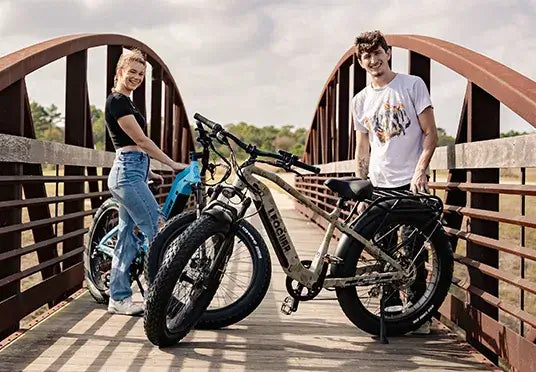
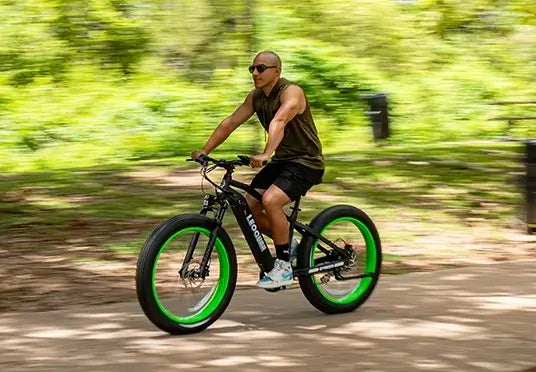
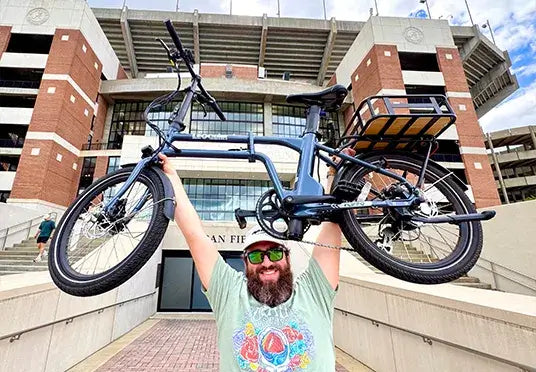
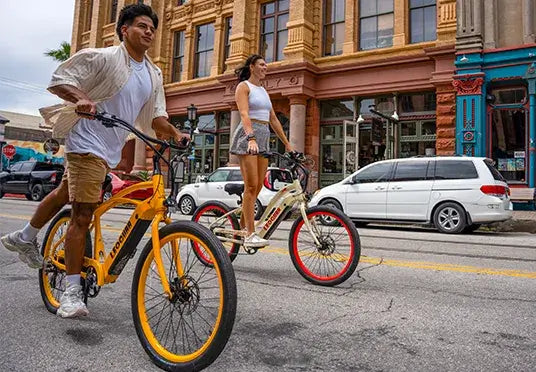
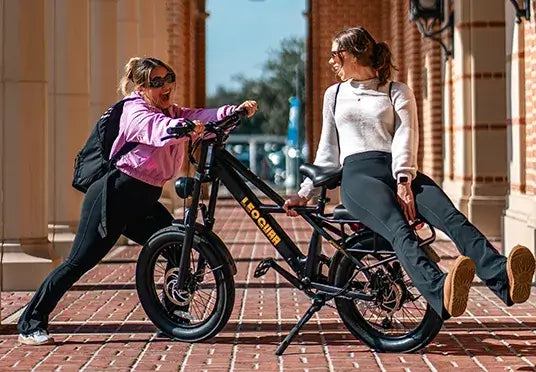
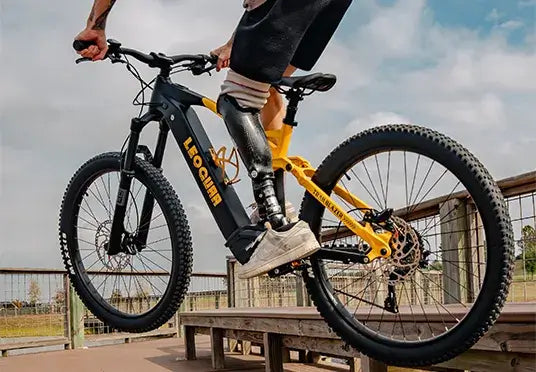

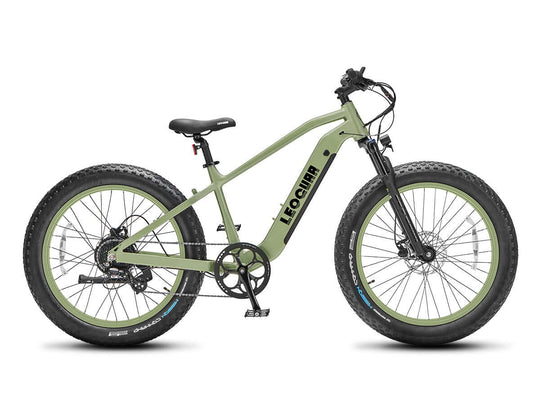
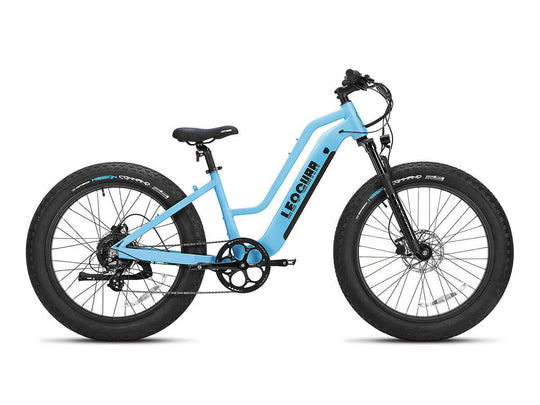
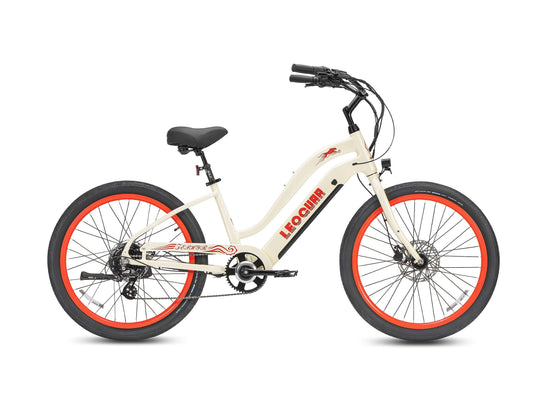
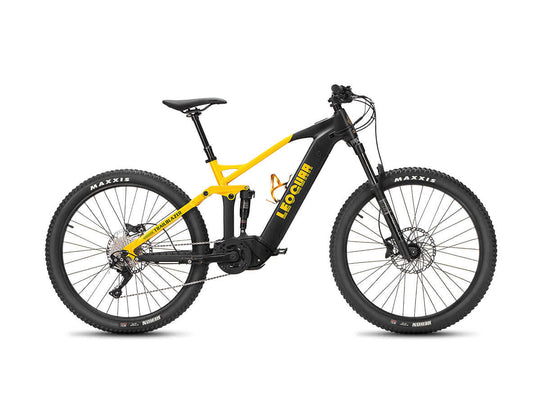
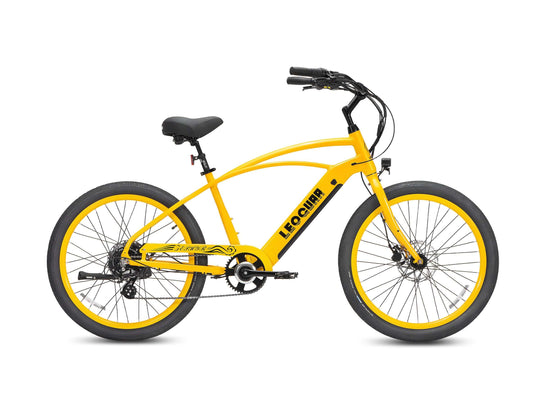
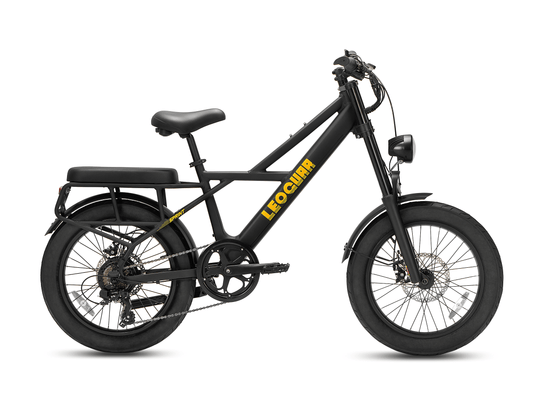

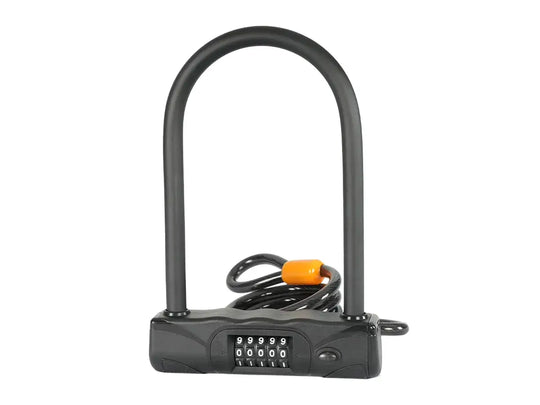
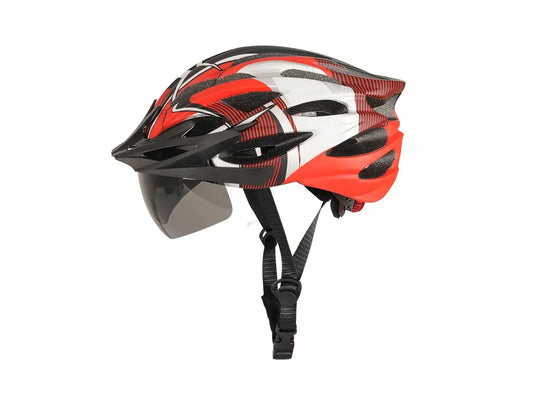
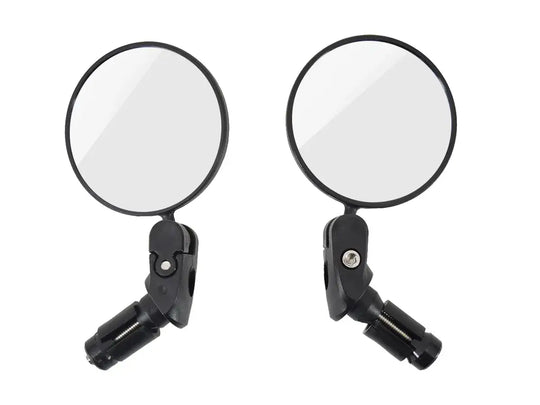

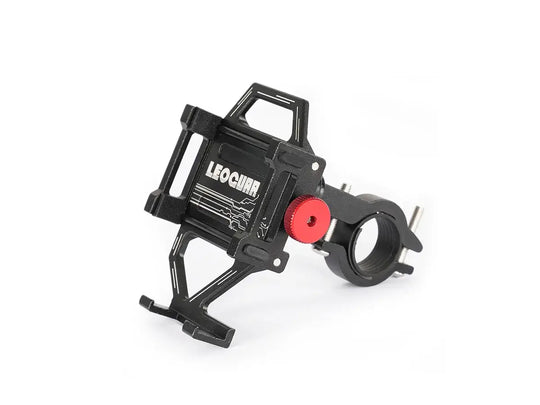
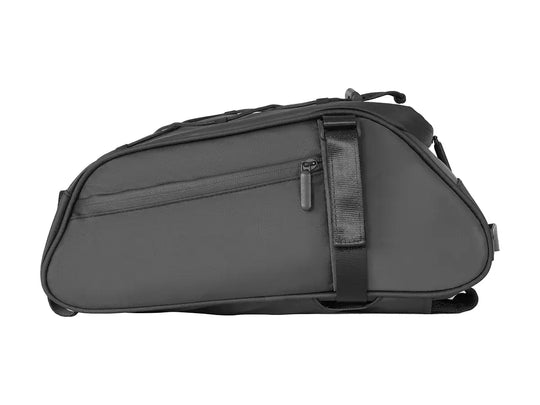
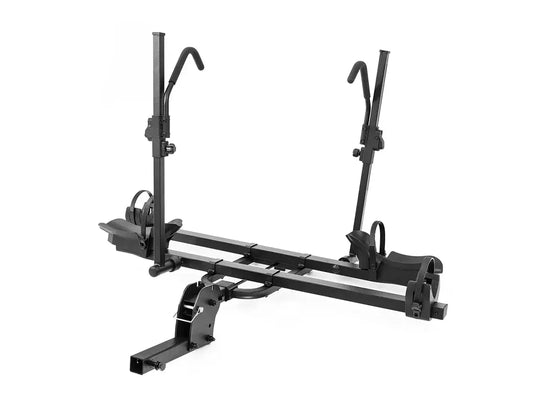
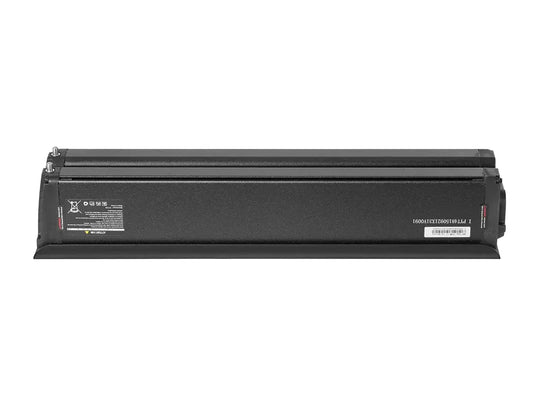
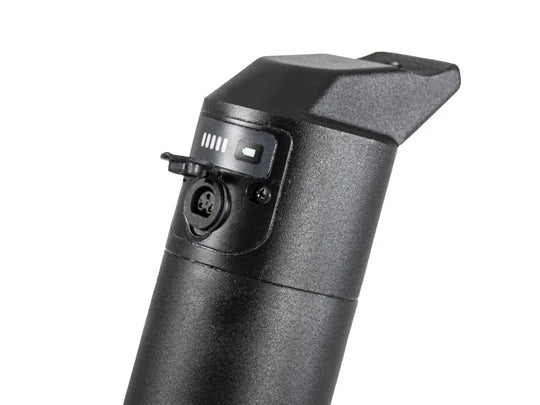
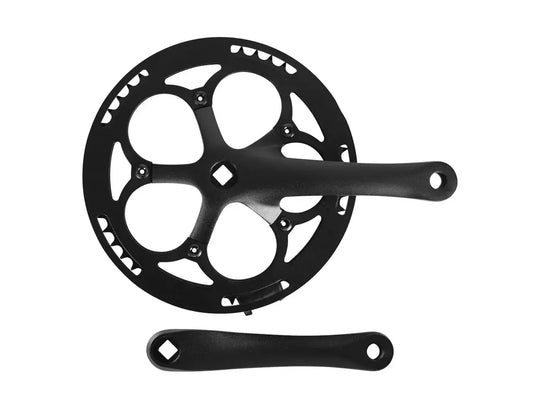
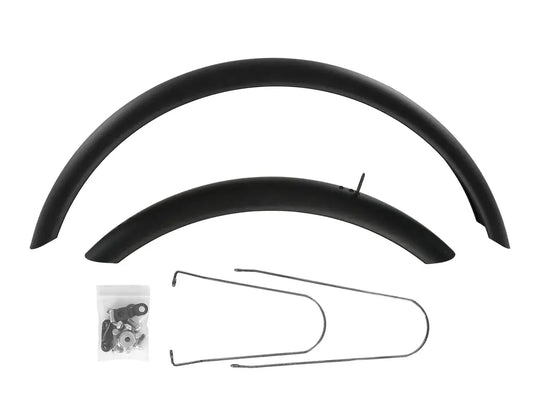
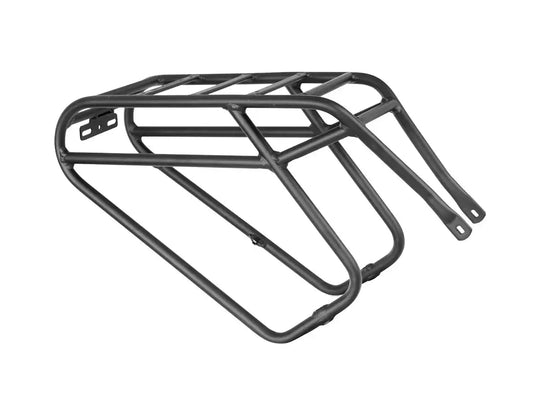
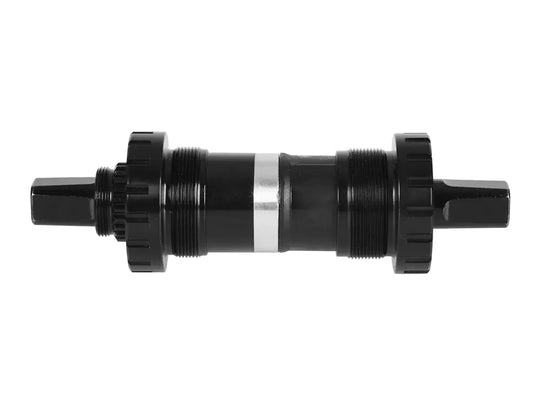
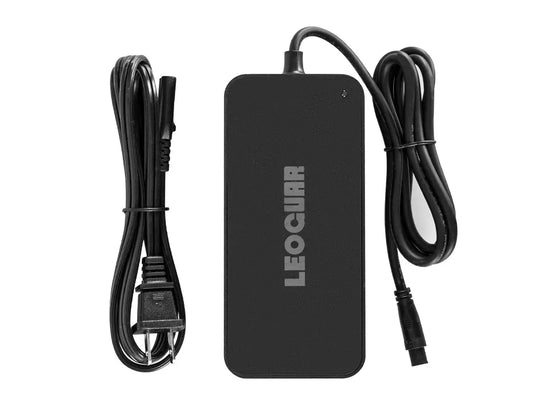
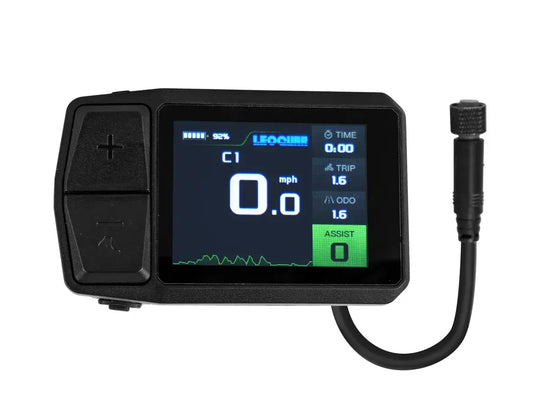

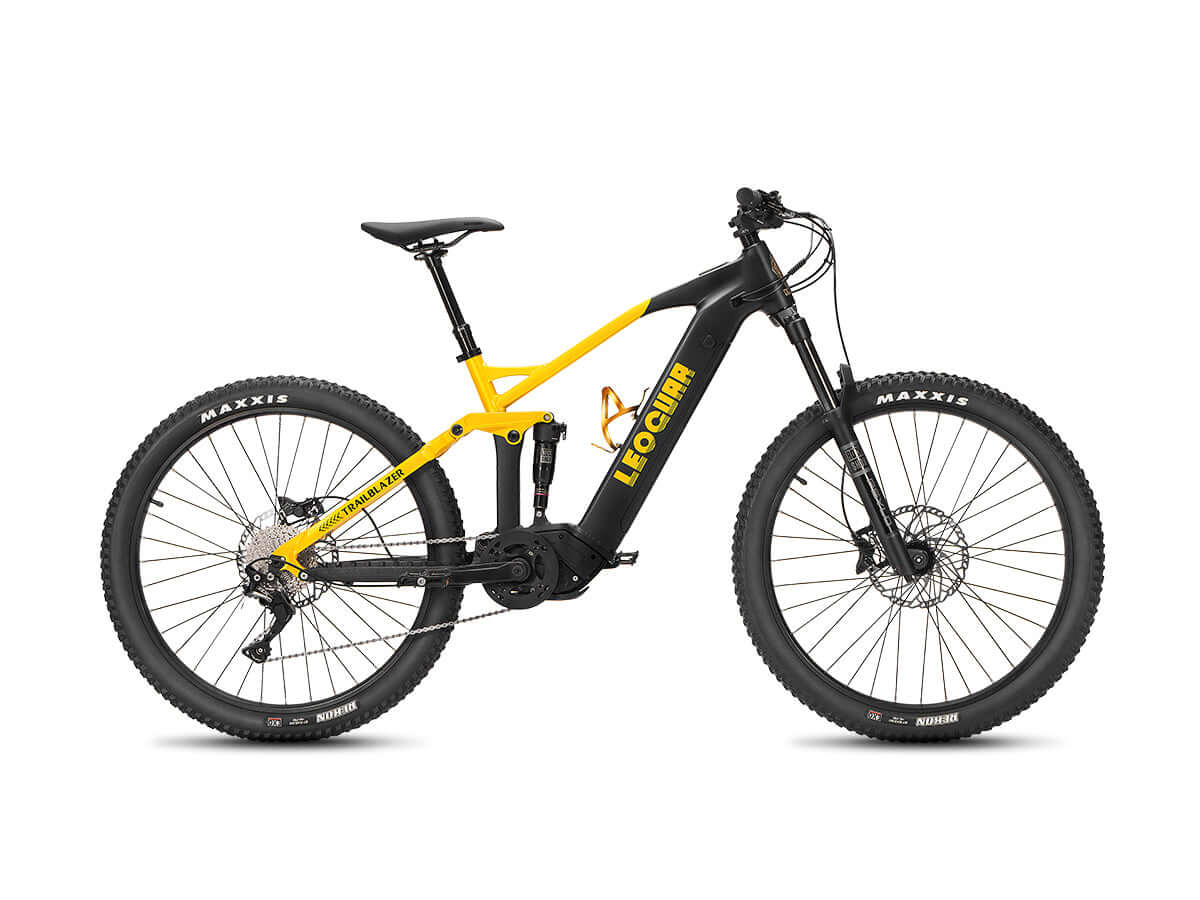








Leave a comment